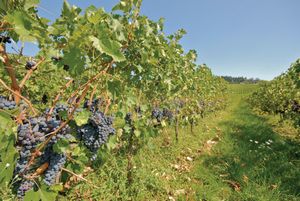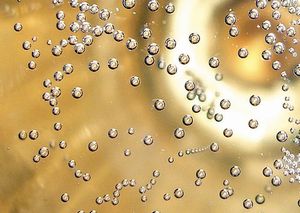Winemakers all across Italy are breathing sighs of relief as their grapes have been picked, pressed, and are now on their way to becoming 2007 vintage wine. Here’s a look at the grapes of the 2007 harvest, from the vineyard to your table.
THE OUTLOOK
Close to home, members of the Chianti Classico Wine Consortium seem to be doing a lot of smiling. While they admit that the phrase un’ottima annata (‘an excellent year’) has been abused, they believe it is just the right sentiment for the 2007 harvest. Chianti grapes are down in quantity by 10–15 percent, which should produce especially high-quality wines.
In Montepulciano, Susana Crociani continues her family’s generations-long tradition of winemaking. She says this year’s grapes were healthy and matured at exactly the right time. Extreme heat during the early summer made for some anxious moments, but the short rains in the middle of August and beginning of September produced grapes that were full of sugary juice. Crociani is convinced that 2007 will be ‘a truly great year’.
Further south, in Montalcino, Hayo Loacker said the harvest at his family’s wineries was the earliest in the last 20 years thanks to a very warm spring that jump-started their vines. He feels their grapes matured in an ‘ideal way’, and he expects some ‘excellent wines’ to come out of this harvest. Loacker runs his vineyards on bio-dynamic principles, using natural techniques to make the vines disease-resistant rather than employing synthetic fungicides.
In much of Tuscany, it was a strange year. The winter was not very cold. Spring and early summer were too hot. We had chilly spells in August. And we had lots of unneeded, unwanted rain. Wet grapes can mold, so they should not be picked when they are wet. However, if the goal is to make a big red wine, grapes should be left on the vine as late as possible to increase their sugar content.
THE PROCESS
In Italy, grapes are generally still picked by hand and put into small containers, either straw or plastic. It is important that the skins of the grapes not be broken during this process as it can lead to the beginning of fermentation.
After the stems have been removed, the grapes go into the crusher or press, where the object is to extract the juice (called must) while keeping the skins intact. Wine’s color comes from letting the skin of the grape soak in the juice during fermentation. The longer the skin soaks during this process—called maceration—the darker the juice will be. Tannins—the substance in wine that sometimes makes your mouth feel dry—are extracted from the seeds and skin of the grapes during maceration. Red wines will naturally have more tannins, since most white wines do not ferment with their skins.
The winemaker then adds what he thinks is the perfect amount of yeast to the must to promote fermentation. During fermentation, the yeast reproduces itself until all the fermentable sugars have been consumed and turned into alcohol.
The winemaker will move the fermented must into a container. Types of containers include concrete vats (rarely used); steel containers (usually for whites and some reds); and wood (large barrels, intermediate barrels, and barriques, which are small barrels that hold 225 liters).
Deciding to bottle is a delicate decision—depending on the type of wine, it can ferment for days, weeks, or even years.
FROM THE BARREL TO THE TABLE
This year’s barrel-tastings are not until February. In the meantime we’ll just have to enjoy the Chianti Classicos, Vino Nobile di Montepulcianos, and Brunello di Montalcinos already on the shelves. Be sure to keep your eye out for shops advertising sfuso wines. Bring your own bottle to fill up by the liter or demijohn.








